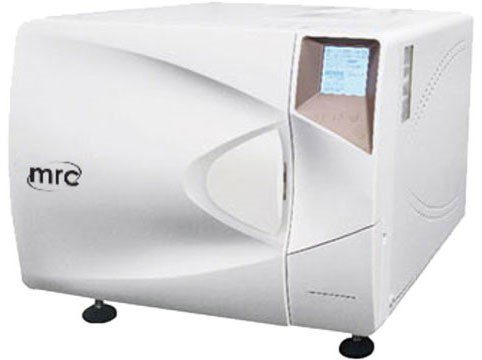In the fast-paced world of dentistry, where precision and patient safety are paramount, the significance of proper sterilization cannot be overstated. Dental clinics, bustling with activity, rely on advanced equipment to ensure the highest standards of cleanliness and infection control. Two indispensable tools in this regard are the autoclave and ultrasonic cleaner.
Table of Contents
Autoclave: A Dental Sterilization Powerhouse
An Autoclave , a cornerstone in dental sterilization, operates as a pressure chamber to eliminate bacteria, viruses, and spores from dental instruments. Its role is to safeguard patient health by creating an environment free from harmful microorganisms.
Different Types of Autoclaves
Dental professionals can choose from various autoclave types, such as gravity displacement and pre-vacuum autoclaves. Each type caters to specific sterilization needs, ensuring flexibility and efficiency in dental practices.
Advantages of Autoclaving in Dental Settings
Autoclaving provides a foolproof method for sterilizing dental tools, ensuring the elimination of pathogens that could lead to infections. Its efficiency, reliability, and ability to handle a range of instruments make it an indispensable asset in dental clinics.
Ultrasonic Cleaner: The Silent Sterilization Hero
While autoclaves handle larger instruments, ultrasonic cleaners specialize in meticulously cleaning small and intricate dental tools. Utilizing sound waves, these cleaners reach areas that manual cleaning might miss, guaranteeing a thorough sterilization process.
Benefits of Ultrasonic Cleaners in Dentistry
Ultrasonic cleaners not only enhance sterilization but also prolong the life of dental instruments by preventing corrosion. Their efficiency in removing contaminants from hard-to-reach surfaces makes them an essential part of dental clinics’ sterilization protocol.
Why Sterilization Is Crucial in Dental Clinics
Patient Safety
Sterilization is a non-negotiable aspect of dental care as it directly impacts patient safety. A sterile environment minimizes the risk of infections, ensuring that patients can undergo dental procedures with confidence in the clinic’s commitment to their well-being.
Compliance with Regulations
Dental clinics must adhere to stringent regulations regarding sterilization to maintain professional standards. Compliance not only safeguards patient health but also establishes trust and credibility in the dental community.
Prevention of Cross-Contamination
In the dynamic environment of a dental clinic, preventing cross-contamination is vital. Proper sterilization practices, including autoclaving and ultrasonic cleaning, act as a barrier against the transmission of infectious agents.
Choosing the Right Autoclave and Ultrasonic Cleaner
Factors to Consider
Selecting the appropriate sterilization equipment involves considering factors such as clinic size, instrument volume, and budget constraints. Tailoring choices to specific needs ensures optimal performance and resource utilization.
Maintenance and Durability
Regular maintenance of autoclaves and ultrasonic cleaners is crucial for longevity and sustained efficiency. Dental professionals must invest in equipment with a proven track record of durability and reliability.
Selecting the right autoclave and ultrasonic cleaner for a dental clinic is crucial to ensure effective sterilization of dental instruments and equipment. Here are some factors to consider when making these choices:
Autoclave:
1. Type of Autoclave:
· Class B Autoclave: Recommended for dental clinics as it can sterilize a wide range of instruments, including hollow and porous ones.
2. Capacity:
· Choose an autoclave with a suitable chamber size to accommodate the volume of instruments typically used in the clinic.
3. Cycle Time:
· Consider the cycle time required for sterilization. Faster cycles can improve workflow efficiency.
4. Ease of Use:
· Opt for an autoclave with user-friendly controls and easy maintenance features. Touchscreen interfaces and automatic functions can be beneficial.
Ultrasonic Cleaner:
Frequency and Power:
Select an ultrasonic cleaner with an appropriate frequency and power level for effective cleaning. Higher frequencies are suitable for delicate instruments.
Tank Size:
Choose a cleaner with a tank size that accommodates the instruments used in the dental clinic. Consider the diversity of instruments and their sizes.
Heating and Timer Functions:
Look for a model with heating capabilities to enhance the cleaning process. Timer functions allow you to set specific cleaning durations.
Material Compatibility:
Ensure that the ultrasonic cleaner is compatible with the materials commonly found in dental instruments, such as metal, plastic, and rubber.
Ease of Operation:
Opt for a user-friendly interface with adjustable settings. Intuitive controls and digital displays can make operation more straightforward.
Image credit – יח”צ

